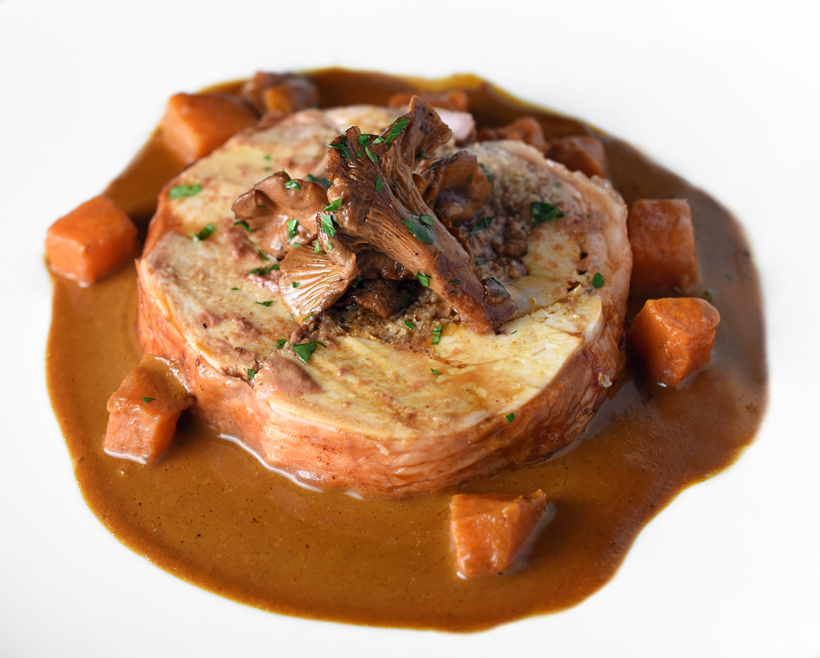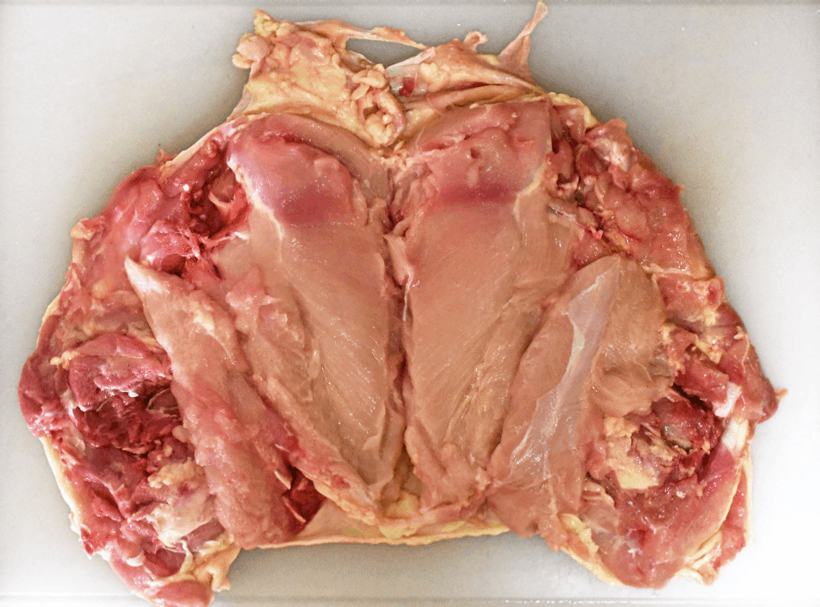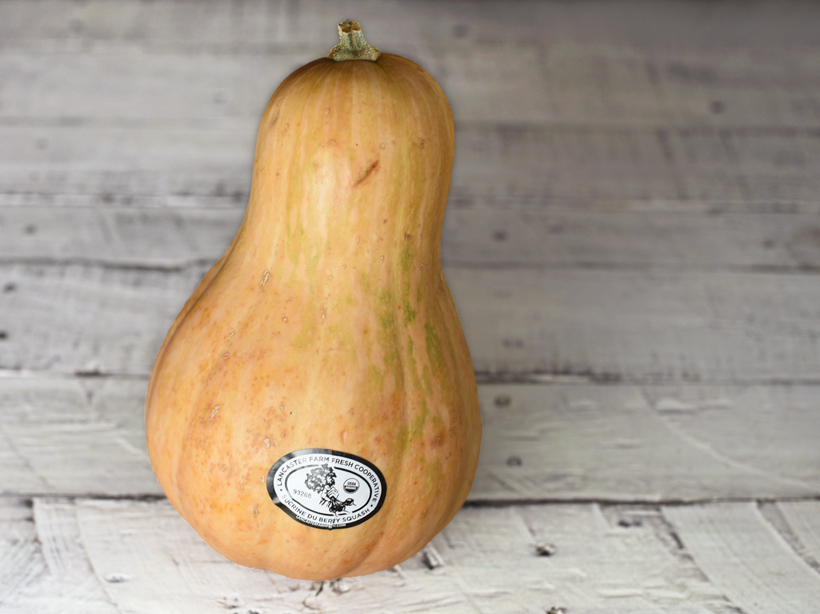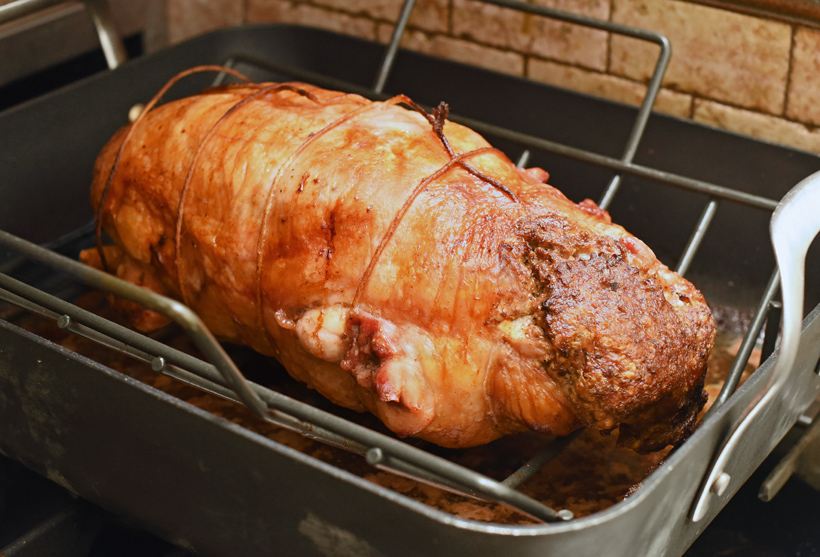A long, long time ago, back in 2012, Daniel Humm’s roast chicken for two at the NoMad was all the rage in foodie circles, “talked about more avidly and incessantly than any other new restaurant offering in town” according to The New York Times. All of a sudden, the most boring protein of the restaurant world was cool again, sparking an infatuation with gastronomic roast chicken that persists to this day (the dish is still served at the NoMad). The little secret in Humm’s bird was the breast, basted with melting foie gras and scented with black truffles. Sounds delicious? Half of New York City thought so.
Except… foie gras doesn’t melt (not to mention that not all black truffles are born equal, but that’s besides the point today). Sure, with a fat content ranging between 50% and 65%, it can ooze plenty of grease. But you’re still left with 35-50% of liver (because that’s what foie gras is), and to use the words of Harold McGee, liver “is a delicate organ that is best briefly cooked; long cooking dries it out.” It’s almost the polar opposite of a roast chicken, in other words. So as one might have predicted, when I tried the famous chicken at the NoMad, I found between the delicious breast meat and crispy skin a layer of overcooked liver particles floating in a suspension of fat. Sad!
Oh but, “whole raw foie gras is tempered and then passed through a tamis,” the NYT informs us. I don’t know what Pete Wells was served, but all that tempering and sieving didn’t save my bird. Let’s go through the science one more time… On one hand, my own foie gras terrine recipe recommends an internal temperature of 54.5 C / 130 F, and some cooks go as low as 49 C / 120 F. On the other hand, the optimal temperatures for poultry, are around 65 C / 150 F for the breast, 71 C / 160 F for the dark meat, and 175 C / 350 F for the skin. It should therefore be obvious, without a diagram, that piping foie gras between the breast and the skin is bound to disappoint. Even if you use the higher temperatures recommended by the cremators who work for the USDA, it doesn’t make sense.
One solution would be to put the foie gras inside the meat, not outside, and make a sort of deluxe chicken Kiev. And I might very well give this a try another day — I already have one great chicken Kiev recipe of my invention gathering digital dust in a wiki. Instead, through countless attempts, I first tried to increase the foie gras “shitting point” (i.e., the temperature beyond which it turns to shit) by mixing it with more heat resistant ingredients: brioche, butter, even chanterelle purée, not to mention my secret chicken Kiev ingredient that I don’t want to name today. While it sometimes improved the result, I lost interest before the hypothetical eureka moment ever came.
Had I persisted a little longer, I might have found videos like the one below, in which Humm’s mysterious foie gras mixture is revealed: brioche breadcrumbs, butter, not a lot of foie gras, and black truffle. Looks like my own experiments weren’t too far off! Still, if this is what I ate at the restaurant, it’s no proper way to serve foie gras.
https://www.youtube.com/watch?v=i6if_2FPlP8
A few weeks ago, as I was looking for inspiration for a holiday roast, I came across a recipe for chicken and foie gras ravioli. This somehow triggered memories of the NoMad chicken conundrum, and ultimately gave birth to today’s dish. But wait, what exactly does all this have to do with Food Perestroika: Adventures in Eastern Bloc Cuisine? Wasn’t Daniel Humm born in Switzerland? If you read this blog regularly, you should be familiar with one of my favorite deductive sequences: foie gras – Hungary – Eastern Bloc – Food Perestroika. All that’s left to do, therefore, is to find a few new pairings to add some more Magyar couleur locale to the dish (yes, take your paprika out of the pantry).
- I start with a boned, stuffed capon. It can be a lot of work to bone the whole bird while keeping it in one piece, but I love the way it comes out when it’s done — beautiful round slices with the stuffing in the middle. And since the roast is boneless, it’s super easy to carve and serve. The stuffing is where the foie gras makes its entrance. First I grind some together with the capon’s dark meat and liver, then I combine the mixture with chunks of homemade foie gras boudins blancs (a sausage made with white meat and dairy).
- The NoMad chicken is first presented whole at the table, then taken back to the kitchen where the legs are carved off, boned, and transformed into a sort of two-minute chicken-morel fricassée. In my first experiments with Hungarifying the dish, this became a chicken paprikás with a side of sautéed chanterelles. These are successful pairings, but now that I’m already using the legs for the stuffing, I’m replacing the dark meat here with butternut squash. We all need to eat more vegetables anyway, even in winter.
Looking back at this story now, it seems to me that my stuffed capon has pretty little in common with any of its so-called inspirations. That’s not necessarily a bad thing, of course, but after trying my capon, you may still feel a need to go to the NoMad before you can decide for yourself which is the better approach…

Foie gras boudins blancs
Yields 8-10 servings (about 400 g)
200 g skinless boneless chicken breast, large dice
65 g raw foie gras, large dice
6 g kosher salt
0.75 g ground black pepper
0.25 g ground nutmeg
0.5 g ground cinnamon
0.5 g ground star anise
9 g AP flour
100 g egg whites (about 3)
150 g skim milk
- Pass the chicken breast and foie gras through the fine die of a meat grinder. Transfer to a bowl, and chill in the freezer for 5 minutes.
- Add the salt, pepper, nutmeg, cinnamon, star anise, and flour to the bowl, and mix with a spatula.
- In a blender, process the egg whites on low speed for a few seconds, then mix in the milk. Add the meat stuffing, and slowly increase the speed to high. The blades must emulsify the mixture in a nice four-leaf clover pattern, not spin in the air while the mixture is stuck to the jar walls.
- Stop the blender, scrape the walls of the jar, and blend from low to high speed one more time. You can use a food processor if you prefer (I don’t have one).
- Using plastic wrap, shape the mixture into 3 cylinders (the exact dimensions don’t really matter). Place the cylinders into a sous-vide pouch, and vacuum-seal.
- Cook the pouch in a 170 F water bath for about 1 hour, until the internal temperature of the boudins blancs reaches 160 F. Let cool, and reserve.

Capon fabrication
Yields 8-10 servings
1 whole capon with giblets (4400 g)
kosher salt (see below)
- Reserve the liver for the stuffing, and optionally the neck for the goulash sauce. Discard other giblets.
- Cut off the drumsticks, as well as the wings at the second joint. Scrape the leg and wing meat off the bones. Reserve.
- Position the bird on its breast, and separate the meat from the carcass, starting from the middle. Once you’re done, the breast and thighs should still be attached together as one (you can watch this video to get a better idea of how it should be done.) Remove the remaining thigh and wing bones.
- Pick any remaining meat from the carcass, and add to the leg and wing meat. If you still have less than 450 g, use strips from the thickest part of the breast until you reach that weight. Reserve this meat in the refrigerator for the stuffing.
- Reserve the bones and carcass for the the goulash sauce.
- Place the boned capon in a pot, cover with a brine made of cold water blended with 7% salt, and refrigerate for 12 hours.
- Discard the brine, and soak the capon in fresh cold water for 1 hour, changing the water every 15 minutes.
- Pat the meat dry with paper towels, and proceed with stuffing below.
Stuffed capon
Yields 8-10 servings
55 g rye-pumpernickel bread, torn into pieces
80 g milk
140 g shallots
20 g butter
capon liver (about 80 g), large dice
450 g reserved capon meat, large dice
70 g foie gras, large dice
5 g salt
0.3 g ground black pepper
2 g sweet paprika
25 g cognac
55 g egg (about 1), beaten
385 g foie gras boudins blancs, large dice
boned capon
- Soak the bread in the milk for about 30 minutes, then squeeze well, and discard the milk.
- In a pan over medium heat, sauté the shallots in the butter until translucent. Add the liver, cook for 2 minutes, then remove from the heat and let cool.
- In a bowl, combine the capon meat, bread, shallot-liver mixture, foie gras, salt, pepper, and paprika. Pass through the fine die of a meat grinder twice. With a spatula, mix in the cognac, egg, and boudins blancs. Refrigerate for at least 1 hour.
- Spread the boned capon on a large board, with the thighs close to the bottom edge, and what used to be the neck near the top edge. Cut off a couple strips from the thickest part of the breast and use to build up the parts with the least amount of meat (this is to ensure that the stuffing ends up being wrapped in a reasonably even layer of capon meat).
- Place the stuffing in the middle of the capon, and shape like a log, oriented vertically, from the bottom to the top of the board, leaving an inch or so at each end. Wrap the capon around the stuffing with a small overlap. (There might be slightly too much stuffing; in that case, remove the extra, and cook it outside of the bird.) Tie together with butcher’s twine; you can also seal the two ends with twine so the stuffing doesn’t come out, but that’s not absolutely necessary. Refrigerate until ready to roast.

Goulash sauce
Yields 8-10 servings (about 450 g)
210 g peeled onion
5 g peeled garlic cloves
150 g cored red pepper
120 g peeled carrot
12 g sweet Hungarian paprika
1.5 g ground star anise
1.5 g ground coriander
1.5 g ground cumin
1.5 g ground caraway
1.5 g ground allspice
about 1000 g capon bones and neck (reserved above)
salt
black pepper, ground
15 g olive oil
15 g tomato paste
270 g red wine
700 g vegetable stock
- Slice the onion and garlic very thinly using a mandoline. Chop the red pepper and carrot into a brunoise (the mandoline can also help you do half of this work).
- In a saucepan over medium heat, heat the paprika, anise, coriander, cumin, caraway, and allspice for 3 minutes, shaking regularly. Reserve.
- Season the capon bones (and optional neck) with salt and pepper. Heat the olive oil in an oven-proof pot over high heat, then sauté the bones in the oil until brown on all sides. Take out of the pot, let cool for a few minutes, then wrap in cheese cloth and tie with twine (this way it will be easier to remove the bones once the sauce is done).
- In the same pot over medium heat, sauté the onion and garlic until soft, then add the spices and stir for 2 minutes. Add the red pepper, carrot, and tomato paste, and cook for 5 more minutes.
- Add the red wine, and simmer until reduced by half.
- Return the bones to the pot (in the cheesecloth), add the vegetable stock, and bring to a boil. Cover with a lid slightly ajar, then cook in a 300 F oven for 4 hours.
- Let rest at room temperature for 30 minutes, then remove the bones from the pot and discard. Pass the sauce through a chinois, using a ladle to squeeze as much liquid as possible out of the vegetables.
- Transfer the sauce to a saucepan, and reduce over high heat to 450 g. Reserve.
Butternut squash paprikás
Yields 8-10 servings
1000 g peeled and seeded butternut squash
60 g olive oil
salt
black pepper, ground
goulash sauce
100 g heavy cream
75 g crème fraîche
- In a bowl, toss the squash with the olive oil, salt, and pepper. Transfer to a baking sheet lined with parchment paper, and roast in a 225 C / 450 F oven for about 30 minutes, until golden brown.
- Measure 100 g of the squash, then process in a blender with the goulash sauce, heavy cream, and crème fraîche. Pass the sauce through a chinois, combine with the remaining squash dice, and reserve.

Roasted Capon
Yields 8-10 servings
stuffed capon
30 g butter
water
- Place the capon on a rack in a roasting pan, with the butter at the bottom of the pan. Cook in a 175 C / 350 F oven for 30 minutes.
- Add 400 g water to the pan, then cook another 2 1/2 hours. Every 1/2 hour, add more water if it’s running low, baste the roast, turn it a 1/4 turn, and let it rest 10 minutes before returning it to the oven. The roast is ready when the interior temperature reaches at least 62.5 C / 145 F everywhere. Let rest out of the oven for another 20 minutes.

Sautéed chanterelles
Yields 8-10 servings
15 g canola oil
25 g butter
380 g cleaned chanterelles, halved if desired
salt
black pepper, ground
parsley, finely chopped
- Heat the oil and butter in a pan over medium heat.
- Sauté the chanterelles, season with salt and pepper, and cook until tender and all the liquid has reduced.
- Sprinkle with parsley, and reserve.
Assembly
Yields 8-10 servings
butternut squash paprikás
roasted capon
sautéed chanterelles
- Reheat the butternut squash paprikás in a saucepan over low heat.
- Carve the capon into slices about 2 cm thick.
- Place one slice of capon in the center of each plate, and spoon some jus from the roasting pan on top. Arrange the butternut squash paprikás all around it, with enough sauce to surround the meat. Top with chanterelles, and serve.

